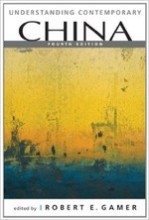Summary: Gender And Development
- This + 400k other summaries
- A unique study and practice tool
- Never study anything twice again
- Get the grades you hope for
- 100% sure, 100% understanding
Read the summary and the most important questions on Gender and Development
-
Haslam 95-103
-
What is the relationship of the DAWN report to the GAD approach (1) and what does it say (2)?
It is the reference point for the GAD approach.
States that:
- Social relations between the sexes are a development issue.
- the indebtness of developing countries, spread of neoliberalism and religous fundamentalism disproportionately affect women. -
How does GAD aim to promote gender equality?
Through the empowerment of women. Empowerment = giving tools to lift themselves out of the situation (e.g. better property rights, promotion of participation in private decision-making) -
Final part 1
This is a preview. There are 2 more flashcards available for chapter 14/12/2016
Show more cards here -
Why should men also be included in gender development? (4)
- gender roles are not universal: they differ per case
- it allows for harnessing skills and talents per individual: men can also deviate from gender roles
- men's cooperation is crucial for succes projects
- avoids blowback of men feeling put aside -
What is the definition of human development and gender development?
Human Development: Improvements in all aspects of an individual's wellbeing, from their health status to economical and political freedom.
Gender Development: improvement in the living conditions and quality of life of the female gender in relation to the male gender.. towards parity. -
What were the three social phenomena that made way for the Women in Development approach (WID) (3)
- the mobilization the feminist organizations in the North
- the publication of Boserup's 'women's role in economic development'
- the declaration of the United Nations Decade of Women (1975-85) -
What were the purpose and means (2) proposed by WID?
Purpose : integrate women in the workforce and increase their productivity (to improve their lives)
Means:
- education and skills training
- improving access to credit and advanced Agricultural techniques -
What are the main points of critique on the WID approach? (4)
- It reflects the reality of the Northern women, but not the collective needs of the Southern Women.
- It imposes the extra burden of work on women because it does not consider the inqualities in work in the private sphere.
- In it's insertion into the capitalist system, WID does not question the broader structures of development.
- revenue generating and training projects are insufficient because they do not alter hierarchical structures of production or socio-cultural models that favour men of women. -
What are the key points Esther Boserup makes in 'Women's role in economic development' (2)
- statistics either ignored or underestimated the value of work performed by women.
- modernization (increasingly specialized labour) deteriorates women's status because women are often tasked with simple manual activities whereas man do the technical part (gender takeover)
-discrimination of women deprives women of equal share with men of economic and social benefits.
This is caused by:
- discrimination in workforce; the specialized roles give women no access to technology and therefore deprived from gaining knowledge and training. -
What are the main points of WAD? (2)
- women have Always contributed to development, although it led to the enrichment of the patriarchal capitalist system.
- Women are a social class that is subordinated to the capitalist mode of production (due to division of material conditions) and unequal international relations. -
What are the main points of critique on WAD? (3)
- even in societies without capitalism (communist or non-western), patriarchy still exists.
- approach overlooks differences among women (class, race, ethnicity)
- emphasis on public sphere overlooks exploitation of women's private time and unpaid labour.
- Higher grades + faster learning
- Never study anything twice
- 100% sure, 100% understanding































